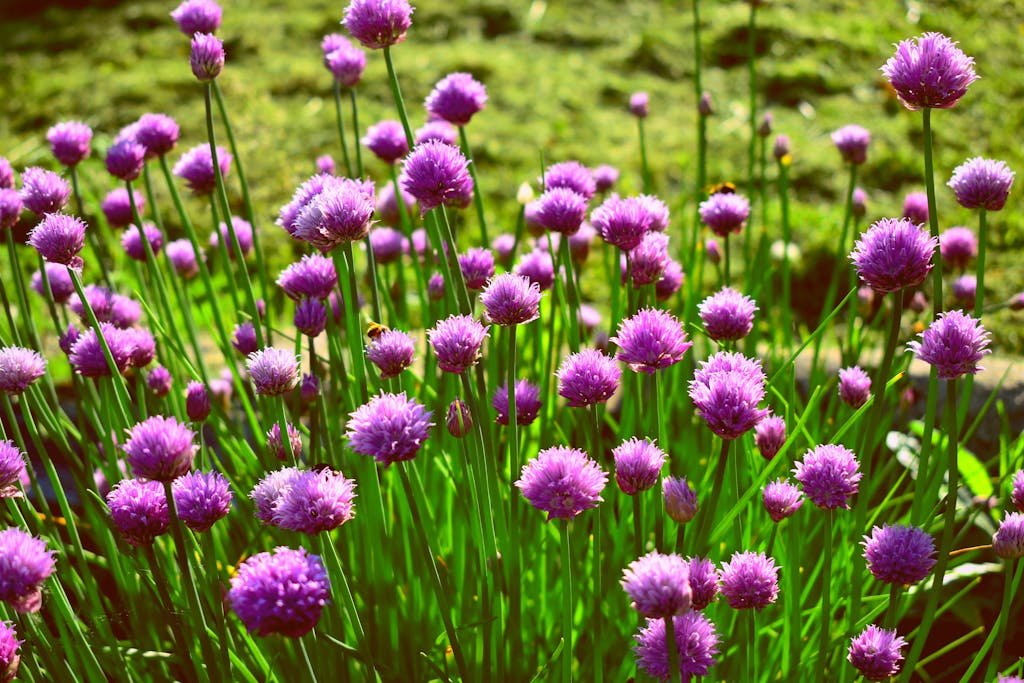Mint – (Mentha spp.)
Mint, or Mentha spp., is a powerhouse of fragrance and flavor that has captivated humans for centuries. From the lush gardens of ancient Rome to today’s modern kitchens, mint’s versatility and vitality make it a perennial favorite. Its refreshing aroma and cool taste have secured its place in a myriad of culinary, medicinal, and cosmetic applications.
This aromatic herb isn’t just about its invigorating scent or its ability to perk up dishes. Mint boasts a fascinating history and a wide array of varieties, each with its unique characteristics and uses. Whether it’s peppermint, spearmint, or any of its other types, mint’s contribution to our gardens and palates is undeniable. Let’s dive into the world of mint and discover the secrets behind its enduring appeal.
Key Takeaways
The History of Mint
Mint’s journey through time is as rich and sprawling as its uses across the globe. This versatile herb, belonging to the genus Mentha, has roots that intertwine with the annals of ancient civilizations. Historical records suggest that mint was valued in ancient times not only for its aromatic properties but also for its medicinal benefits.
The use of mint dates back to Ancient Egypt, where it was a key ingredient in the embalming process, a testament to its preserving and aromatic qualities. Fast forward to Ancient Greece, and mint had woven its way into mythology. It was said to have been transformed from a nymph into the herb by Pluto, the god of the underworld, highlighting its importance in Greek culture. The Greeks also used it to adorn themselves, their homes, and even their banquets, symbolizing hospitality.
In Rome, mint was more than just an herb for culinary use. The Romans were pioneers in studying the medicinal benefits of mint, utilizing it for a plethora of health issues ranging from digestion to strengthening the mind. Pliny the Elder, a Roman author and naturalist, documented mint’s utility in his encyclopedic work, Naturalis Historia, emphasizing its significance in Roman society.
The journey of mint continued through the Middle Ages in Europe, where it was a staple in monastery gardens. Monks cultivated mint not only as a dietary supplement but also for its medicinal properties, using it to treat a variety of ailments from toothaches to stomach issues. This period saw mint becoming more entrenched in daily life, with its fresh scent and flavor making it a favorite.
Mint’s popularity didn’t wane with time; instead, it spread across the continents. By the 18th century, mint had found its way into American herb gardens, quickly becoming essential in both culinary and medicinal applications. Today, research continues to explore the extensive benefits of mint, with studies revealing its anti-inflammatory and antioxidant properties, among other health benefits.
Mint’s history is a reflection of human civilization’s evolution, with its myriad of uses mirroring the changing needs and discoveries of society. Its enduring appeal, from ancient times to modern-day research, underscores mint’s invaluable contribution to both culture and medicine.
The Different Varieties of Mint
Mint, or Mentha spp., encompasses a diverse group of plants known for their aromatic leaves and versatile uses. With over 600 varieties identified, mint plants can vary greatly in flavor, aroma, and appearance. Among the most popular types are peppermint (Mentha × piperita), spearmint (Mentha spicata), and watermint (Mentha aquatica). Each variety carries its unique characteristics and benefits, making mint a fascinating subject for both culinary experts and herbalists.
Peppermint and Spearmint: A Closer Look
Peppermint is celebrated for its intense flavor and high menthol content, a quality that lends itself well to medicinal and cosmetic applications. Research has shown that peppermint oil can relieve symptoms of irritable bowel syndrome and alleviate digestive issues. On the other hand, spearmint contains less menthol and presents a milder flavor profile, making it a preferred option in culinary endeavors. Its gentle aroma and taste complement a wide range of dishes and beverages.
Lesser-Known Varieties
While peppermint and spearmint dominate the mainstream, other varieties like apple mint (Mentha suaveolens) and chocolate mint (Mentha × piperita ‘Chocolate’) offer intriguing alternatives. Apple mint boasts fuzzy leaves and a sweeter aroma, often used in jellies and teas. Chocolate mint, a peppermint variety, combines the traditional minty flavor with subtle chocolate undertones, making it a favorite for desserts and specialty drinks.
Growing Conditions and Care
Mint plants are notoriously hardy and can thrive in a wide range of environments. They prefer moist soil and partial shade but can adapt to full sun exposure. Gardeners often plant mint in containers to prevent it from overtaking other plants, as it is known for its aggressive growth. Regular harvesting encourages fuller, bushier plants and maximizes the yield of fresh, aromatic leaves.
The vast array of mint varieties offers a rich palette of flavors, scents, and medicinal properties. From the robust peppermint to the subtle chocolate mint, there is a type for every preference and use. Their ease of cultivation further solidifies mint’s position as a staple in gardens and kitchens worldwide.
Culinary Uses of Mint
Mint, with its refreshing aroma and cool taste, is a versatile herb integral to cuisines worldwide. Its leaves are used in a variety of dishes, from savory to sweet, enhancing flavor profiles with a burst of freshness. In Mediterranean cooking, mint is a staple, adding a vibrant touch to salads, lamb dishes, and teas. Meanwhile, in Middle Eastern cuisines, it’s essential in tabbouleh and yogurt sauces. Asian dishes also incorporate mint, using it in spring rolls, chutneys, and beverages.
Beyond its use as a garnish or ingredient, mint plays a critical role in beverages. Mojitos and mint juleps showcase mint’s ability to infuse drinks with its aromatic essence, making it a favorite in cocktails and teas. The herb’s cooling effect is not just sensory; it has been scientifically shown to activate certain receptors in the body that simulate the sensation of cooldown, adding a physical refreshment to its psychological uplift.
The culinary appeal of mint extends into desserts and confectioneries. Mint chocolate chip ice cream and peppermint patties are popular treats that balance sweetness with mint’s crisp, cooling effect. It’s also a common flavoring in gums and candies, providing a fresh, clean taste.
Nutritional Benefits
Mint isn’t just about flavor. It’s also packed with nutritional benefits, including vitamins A and C, iron, and fiber. These elements contribute to mint’s antioxidant properties, which can help reduce oxidative stress in the body. Moreover, research has suggested that mint may aid in digestion and relieve symptoms of IBS (Irritable Bowel Syndrome), thanks to its menthol content.
| Nutrient | Amount |
|---|---|
| Calories | 70 |
| Protein | 3.75g |
| Dietary Fiber | 8g |
| Vitamin A | 212 IU |
| Vitamin C | 31.8mg |
| Iron | 5.08mg |
Mint’s culinary uses and benefits make it a cherished herb around the globe. Its ability to cross culinary boundaries, from savory dishes to sweet treats and refreshing beverages, highlights its unparalleled adaptability and appeal.
Medicinal Uses of Mint
Mint has long been cherished not just for its aromatic and culinary delights but also for its numerous health benefits. Throughout history, various cultures have utilized mint in medicinal practices, and modern research continues to uncover its remarkable health properties.
Primarily, mint is celebrated for its digestive benefits. Peppermint oil, derived from the peppermint variety of mint, is particularly noted for its efficacy in relieving symptoms of irritable bowel syndrome (IBS). A comprehensive study published in the Journal of Clinical Gastroenterology found that patients with IBS experienced significant relief from symptoms such as abdominal pain and bloating when treated with peppermint oil.
In addition to digestive health, mint exhibits potent antimicrobial and antiviral properties, making it a valuable ally in fighting infections. Research highlighted in the Journal of Applied Microbiology indicates that mint extracts can inhibit the growth of various bacteria and fungi, showcasing its potential as a natural alternative to synthetic antimicrobials.
Mint’s cooling effect is not just a sensory experience but has practical applications in relieving headaches and migraines. Applied topically, menthol, one of mint’s active components, can help ease headache pain. A study in the International Journal of Clinical Practice supports the topical application of menthol as an effective, natural treatment for migraine headaches.
Moreover, the herb’s anti-inflammatory properties offer promise in treating conditions like asthma and allergies. The rosmarinic acid found in mint has been identified as a compound that may help reduce allergy symptoms, according to research in the Journal of Allergy and Clinical Immunology.
While the exploration of mint’s medicinal uses is vast, these examples highlight its significant potential in contributing to natural health solutions. As investigations into its properties continue, mint stands out as a plant with a rich medicinal heritage and a promising future in health and wellness practices.
Cosmetic Uses of Mint
Mint, with its refreshing scent and cooling sensation, has carved a niche for itself in the cosmetic industry. Menthol, a compound found in mint, is the secret behind its invigorating properties, making it a popular choice in skincare and haircare products. The herb’s versatility extends beyond the kitchen and medicine cabinet, embracing the world of beauty and cosmetics.
Skincare products infused with mint offer a host of benefits. They are known to soothe irritated skin, reduce redness, and provide a cooling effect that can be particularly refreshing during hot weather. Mint’s antimicrobial properties make it an excellent ingredient in face washes and cleansers, targeting acne-causing bacteria and leaving the skin feeling clean and refreshed. Additionally, mint’s astringent qualities can help in tightening the pores, giving the skin a smooth appearance.
In the realm of haircare, mint’s stimulating effects on the scalp are highly regarded. Products containing mint, such as shampoos and conditioners, are believed to invigorate the scalp, promoting blood circulation. This increased blood flow can potentially enhance hair growth and improve hair health. Moreover, the cooling sensation mint delivers can soothe scalp irritation and combat dandruff.
The cosmetic use of mint also extends to lip care, where its hydrating properties, coupled with a pleasant tingling sensation, are utilized in lip balms and glosses. This not only provides moisture to dry, chapped lips but also gives them a fuller appearance.
Research into the cosmetic benefits of mint is ongoing, with studies exploring its potential in new products and applications. The allure of mint in cosmetics lies not just in its sensory appeal but also in its therapeutic properties, making it a timeless favorite in beauty regimens.
Conclusion
Mint’s journey from ancient civilizations to modern-day kitchens and medicine cabinets underscores its enduring appeal and versatility. With its rich history and multifaceted applications in culinary, medicinal, and cosmetic fields, mint continues to be a plant of immense value. Its varieties offer a spectrum of flavors and benefits, catering to a wide range of preferences and needs. Whether it’s enhancing a dish, soothing a stomach, or revitalizing skin and hair, mint’s role is irreplaceable. As research delves deeper into its potential, mint’s future in health and wellness looks promising. Its legacy, deeply rooted in tradition yet constantly evolving, makes mint a timeless treasure in our gardens and lives.


